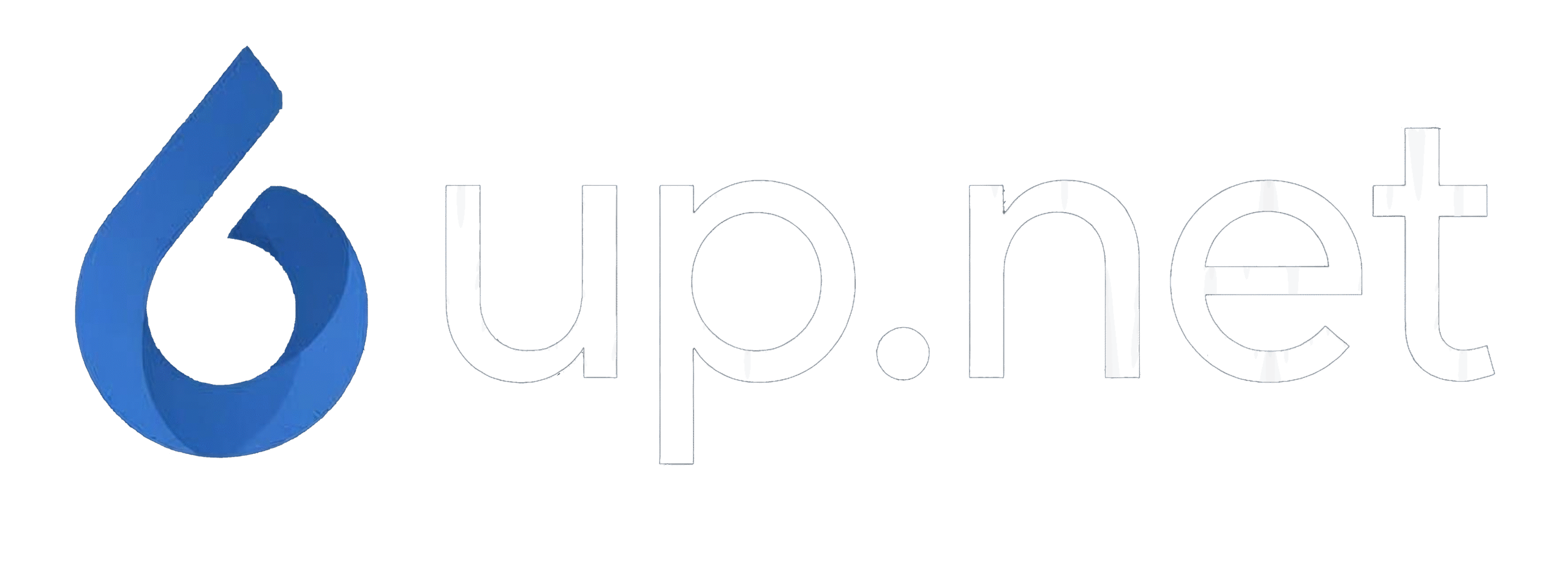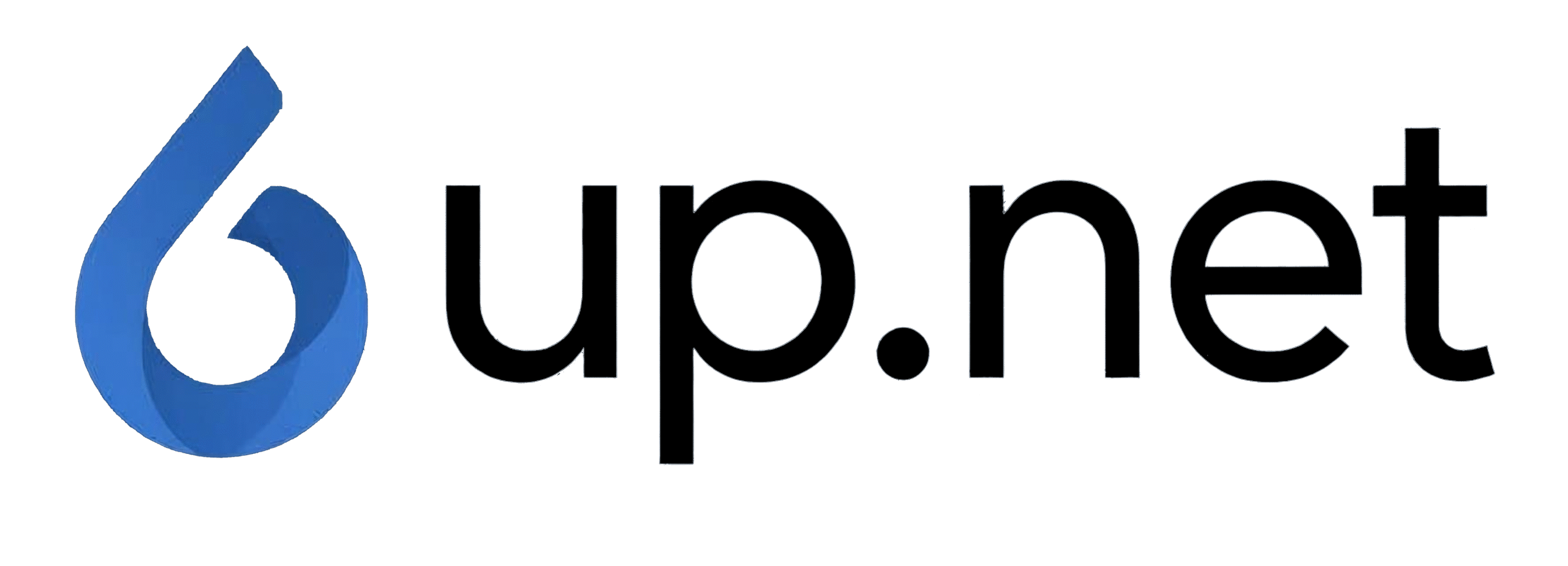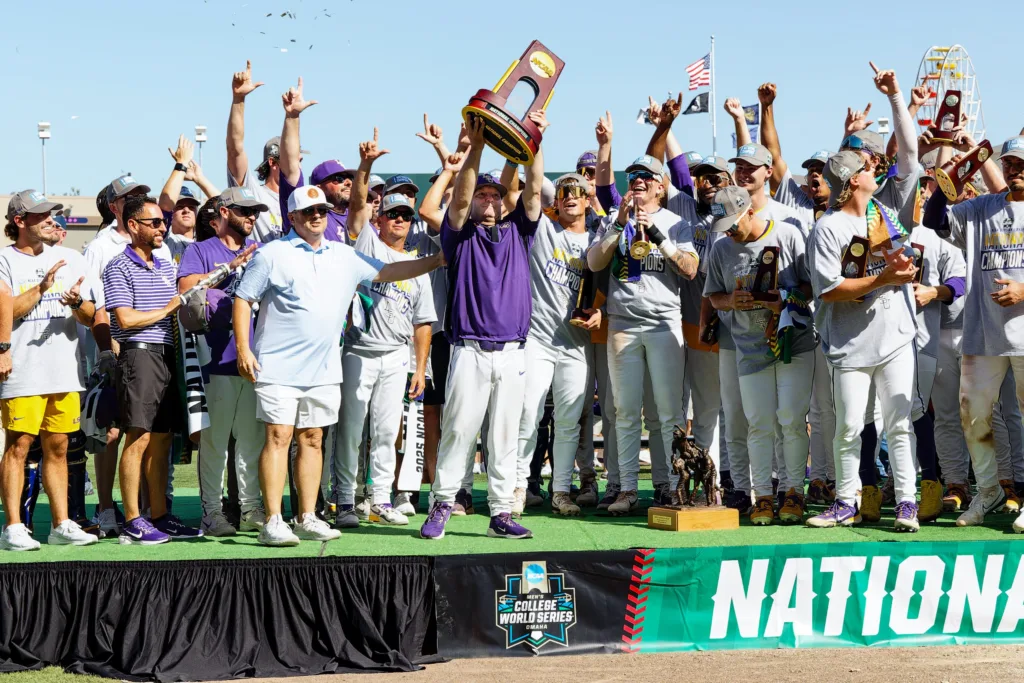Image credit:
(Photo by Eddie Kelly/ ProLook Photos)
Fall college baseball rarely offers definitive answers. Games are limited, results don’t count and many coaches treat the stretch as little more than a conditioning block.
But for fans, it’s the first glimpse at rosters reshaped by the draft, the transfer portal and another recruiting cycle. It’s also a chance to see which programs are laying the groundwork for potential postseason runs.
From bluebloods defending titles to coaches facing pressure to newcomers making their first impressions, the fall is where the earliest outlines of the 2026 season begin to take shape. Here are some key storylines to know heading into the fall.
LSU Begins Its National Title Defense
LSU coach Jay Johnson needed only four years in Baton Rouge to stack a resume most coaches spend a lifetime chasing. Two national championships—including last June’s title run—and the recruitment of righty Paul Skenes—now on a Cy Young track and widely viewed as baseball’s next great star—have made LSU the modern standard. With that success comes a burden of expectation, but Johnson has shown little difficulty carrying it. The 2026 roster again looks equipped to contend, and this fall will offer the first real glimpse at how the Tigers reload.
The turnover is undeniable. LSU lost its top two starting pitchers in Kade Anderson and Anthony Eyanson, the thunder of slugger Jared Jones, steady backstop Luis Hernandez and versatile infielder Daniel Dickinson. To offset those exits, Johnson leaned on both the portal and another elite recruiting haul. Infielder Seth Dardar arrives from Kansas State, Trent Caraway from Oregon State and Zach Yorke from Grand Canyon, while arms like Cooper Moore (Kansas), Santiago Garcia (Oregon) and Danny Lachenmayer (North Dakota State) add depth on the mound.
The Tigers still return a strong core. Casan Evans, William Schmidt and Zac Cowan lead a group of pitchers with the chance to grow into bigger roles. In the field, shortstop Steven Milam and outfielders Derek Curiel and Jake Brown headline the position-player returnees. Together, they form the backbone of LSU’s title defense.
The questions now are simple: Which newcomers can seize everyday jobs, and which pitchers prove capable of carrying the rotation after Anderson and Eyanson? If LSU begins to answer those in the affirmative this fall, Johnson will once again have his team positioned among the group everyone else is chasing.
UCLA’s Huge Year Starts Here
This fall in Westwood feels different. UCLA enters as the easy “way too early” No. 1 team in the country, armed with star power, depth and the kind of continuity rarely seen in today’s transfer-heavy game.
At the center of it all is shortstop Roch Cholowsky, the consensus projected No. 1 pick in the 2026 draft and a player with a legitimate chance to become college baseball’s first-ever two-time Player of the Year. The Bruins aren’t just built on Roch, though.
Nearly the entire roster that reached Omaha in 2025 returns, and most of it came of age as sophomores. That makes UCLA one of the most homegrown powerhouses in the sport and a team that has developed together and now appears ready to peak. The Big Ten won’t offer the same week-to-week grind of the SEC or ACC, either, giving UCLA a relatively smooth path back to the postseason and the opportunity to set its sights on something bigger.
For UCLA coach John Savage, the timing is perfect. He led the Bruins to his lone national title in 2013, but this group may be his most talented since. With a roster stacked with experience, chemistry and a headliner at shortstop scouts already adore, Savage has a team capable of delivering him a second championship—and perhaps cementing the Bruins as the sport’s dominant force in 2026.
High-Profile Coaching Hires Get Their First Crack With New Teams
The 2026 season will open with fresh faces in some of the sport’s most prominent dugouts, and fall ball offers the first window into how these programs are adjusting.
At Mississippi State, Brian O’Connor inherits perhaps the highest expectations in the country. The Bulldogs parted ways with Chris Lemonis before the 2025 season even ended, just four years after he delivered the program’s lone national championship in 2021. O’Connor arrives from Virginia with a resume stacked with postseason success and a roster that already looks capable of contending. He wasted little time reshaping it—bringing elite talent from Charlottesville, scoring big in the transfer portal and landing prep stars such as lefthander Jack Bauer, a flamethrower who carried significant draft buzz. The question in Starkville isn’t whether O’Connor can win, but how quickly he can exceed a championship standard.
Virginia, meanwhile, turned to Chris Pollard, long one of the sport’s sharpest minds, to replace O’Connor. After building Duke into a consistent contender, Pollard brought several standouts with him to Charlottesville and inherited a program flush with resources. His knowledge of the ACC landscape, coupled with Virginia’s ability to attract and retain talent, positions him to compete immediately. This fall will be about establishing continuity while putting his own stamp on a roster that expects to stay in the national picture.
And at Duke, Corey Muscara begins his first head coaching job with a different type of challenge. Academic restrictions limit his reach in the portal, and the Blue Devils’ rebuild will likely take more time. Even so, Muscara has pieced together a competitive group in year one. This fall is about establishing culture, setting expectations and beginning the incremental climb that Duke will need to stay relevant in the ACC.
Coaches On The Hot Seat
As we said at the start, the fall rarely provides definitive answers. Many coaches often view it as a strength-and-conditioning period more than anything, a time to lay physical groundwork and build team chemistry rather than chase results that won’t matter come February. Still, for those squarely in the hot seat conversation, these months can be meaningful. They’re about setting expectations, establishing tone and showing progress to the people paying closest attention.
That’s especially true at Texas A&M, where Michael Earley heads into year two with pressure already mounting. The Aggies began 2025 ranked No. 1, only to become the first preseason No. 1 since Arizona State in the early ’90s to miss the NCAA Tournament altogether. Despite that collapse, Earley hasn’t lost booster support. His roster is loaded with transfer portal talent—a sign of continued investment in his vision. But this fall is about proving that support wasn’t misplaced and that A&M is on track to rejoin the national elite.
South Carolina finds itself in a parallel situation under Paul Mainieri. Year one was rocky, with the Gamecocks mired near the bottom of the SEC standings. Mainieri has essentially remade his roster through the portal, leaning heavily on older players who bring physical maturity and experience. The question is whether that overhaul can spark a turnaround or if 2026 will feel like another uphill climb.
In Stillwater, the circumstances are different, but the urgency is real. Josh Holliday isn’t necessarily on the hot seat, but Oklahoma State fans are restless. The Cowboys haven’t reached a super regional since 2019 or Omaha since 2016, and the program’s once-steady trajectory has begun to feel flat. For Holliday, the fall is less about survival and more about reassurance and showing that Oklahoma State is capable of reasserting itself on the national stage.
Arizona State Faces Critical Fall
Arizona State enters the fall at a crossroads. After three straight seasons without a postseason appearance under Willie Bloomquist—the longest drought in program history—the Sun Devils finally broke through in 2025, earning a No. 3 seed in the Los Angeles Regional. Their stay was brief, but the appearance marked an important first step back toward the standard the program expects. Now, as a second-year member of the Big 12, the challenge is proving that last spring wasn’t an outlier.
Bloomquist and his staff attacked the offseason with urgency, landing one of the nation’s strongest transfer classes. Dean Toigo arrives from UNLV to add power in the middle of the lineup, while shortstop PJ Moutzouridis brings a defensive presence that should stabilize the infield. They’ll join a core that already includes sophomore standout Landon Hairston, who is one of the best young hitters in the country, and lefty Cole Carlon, who returns with designs on a rotation role.
The task this fall is twofold: get physically stronger and build cohesion. Arizona State has assembled the pieces to compete in the Big 12, but consistency and toughness must be established long before opening day.
For a program with both history and urgency pressing on it, this season feels like a prove-it moment—and that starts with how the Sun Devils handle the next few months. If 2026 doesn’t meet expectations, Tempe could be home to one of the most high-profile coaching job openings in the country ahead of 2027.
Roch Is No. 1, But Who Might Challenge Him?
A year ago, the draft conversation felt unsettled all the way until the picks were announced. Was LSU’s Kade Anderson the top college talent? Oregon State’s Aiva Arquette? In the end, UC Santa Barbara righthander Tyler Bremner was the first off the board, but there was never a clear-cut answer.
This year is different. UCLA shortstop Roch Cholowsky enters as the consensus No. 1 prospect and the kind of player scouts expect to hold that spot wire to wire. Still, there’s a compelling chase pack forming behind him. Alabama shortstop Justin Lebron turned in a monster 2025 season, hitting .316/.421/.636 with 18 home runs. On the mound, Florida’s Liam Peterson, Coastal Carolina’s Cameron Flukey and UC Santa Barbara’s Jackson Flora are all jockeying to be recognized as the top arm in the class—and perhaps the one player capable of pushing Cholowsky.
The top of the 2026 draft class already looks stronger than last year’s crop. Fall ball won’t decide anything, but it offers scouts a first snapshot of how these stars are progressing—at least until the newly-imposed scouting dead period begins on Nov. 15 and stretches into mid January.
A Big Fall for Mid-Majors
The squeeze for postseason spots has never been tighter. With the SEC and ACC gobbling up more of the field than ever, mid-majors are left fighting for scraps. The 2025 tournament drove that point home, producing the fewest at-large bids for mid-majors in the super regional era.
A handful of mid-major programs—Coastal Carolina, UC Irvine, UC Santa Barbara, Southern Miss and Dallas Baptist—have built enough equity to be viewed more like power programs than outsiders. For them, the path to the postseason is clearer. But for everyone else outside the power conference structure, the climb is steeper, and the fall becomes critical in setting the tone. Building momentum, showcasing depth and establishing early credibility are the first steps in what amounts to a season-long campaign for consideration.
The timing makes it even more significant with Florida State athletic director Michael Alford stepping in as the new selection committee chair. Alford has already told Baseball America that the “eye test” matters and that he expects committee members to get to know teams beyond their resumes. That philosophy makes the fall more than just a conditioning block for mid-majors—it’s an early chance to leave an impression that could matter when the committee is sorting bubble teams next May.
Roster Rules Kick In This Winter
The long-discussed settlement-related rule changes in college baseball are no longer theoretical—they’re here. Beginning this winter, programs must trim their rosters to 34 players by Dec. 1, a deadline that promises to reshape the sport. The math is stark: More than 1,000 players could suddenly find themselves without a team, scrambling for new homes in an environment with limited openings.
Coaches around the country have already voiced concerns to Baseball America about the ripple effects. The cuts will force difficult decisions, create uncertainty for players who thought their roster spots were secure and potentially spark broader issues with retention and development.
For a sport that has long balanced oversized rosters against the demands of the draft, this new reality introduces challenges no one has had to navigate before. The fallout begins this winter, and it could redefine how teams build and manage their depth for years to come.
Some Way, Way Too Early Predictions
Before a single fall scrimmage has been played, I wanted to put down a marker on some projected 2026 conference winners. These picks are based on nothing more than early impressions of players, roster makeup and program pedigree. The fall will produce evidence, and by the time February rolls around, these predictions might look very different. But for now, here’s where I stand on the power conference races.
SEC: LSU
It’s hard to bet against the Tigers given everything outlined above. Jay Johnson has the momentum, the roster depth and the championship pedigree. That said, the SEC is brutal. Tennessee, Texas, Georgia, Arkansas, Mississippi State and Auburn all have legitimate cases for tops in the conference, and I think Kentucky could be a darkhorse after a strong offseason. Florida has plenty of talent, as well. But for now, LSU feels like the safest bet.
ACC: Georgia Tech
For the first time in more than three decades, Georgia Tech has a new voice in the dugout. Danny Hall retired after 31 seasons and more than 1,300 wins, handing the reins to long-time assistant James Ramsey. Ramsey inherits a roster that’s built to keep winning after last year’s ACC regular season title—the program’s first since 2005. Kent Schmidt, Vahn Lackey, Alex Hernandez and Drew Burress headline the lineup, while Mason Patel, Tate McKee and Cooper McMullen stabilize the rotation. Add in portal pickups like shortstop Jarren Advincula and lefthander Dylan Loy, and the Yellow Jackets look ready to compete again.
Big 12: TCU
The Horned Frogs bring back a strong nucleus in Nolan Traeger, Sawyer Strosnider, Chase Brunson, Noah Franco and Tommy LaPour. Strosnider was a Freshman of the Year contender and All-America selection, while LaPour earned All-America honors for his pitching. Portal additions like Tanner Sagouspe (Cal Poly), Rob Liddington (Incarnate Word) and Walt Quinn (Grand Canyon) should add even more balance. TCU has the depth and star power to top the Big 12.
Big Ten: UCLA
This is the best team in the country from where I sit. The Bruins are loaded with talent, experienced and poised for a return trip to Omaha. I don’t see the Big Ten standing in their way.
Sun Belt: Coastal Carolina
The Chanticleers lost plenty from their 2025 team that reached the national title series against LSU, but I still like them to repeat atop the Sun Belt—which increasingly feels like a power conference in its own right. Cameron Flukey, Dominick Carbone, Scott Doran, Hayden Johnson, Luke Jones and Ryan Lynch form a strong pitching core, while the lineup remains dangerous. A Sun Belt crown feels very realistic.
Discover more from 6up.net
Subscribe to get the latest posts sent to your email.


